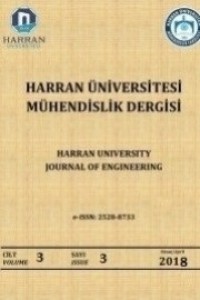Abstract
Bu çalışmada, bir tekstil terbiye işletmesinde üretilen pamuklu
kumaşların kalite oranı iyileştirilmeye çalışılmıştır. Kaliteyi düşüren hatalar
sıralanmış ve en fazla kayba sebep olan kırık (kırışık izi) hatası detaylı
olarak incelenmiştir. Kırık hatasının detayları araştırılırken beyin fırtınası
tekniğiyle potansiyel hata nedenleri belirlenmiştir. Daha sonra önem düzeyi en
yüksek olan potansiyel nedenlerle ilgili hata türü ve etkileri analizi yöntemi uygulanmış
ve destekleyici ek araştırmalar yapılmıştır. Son olarak en riskli olarak
belirlenen nedenlerle ilgili önlemler planlanmış ve hayata geçirilmiştir.
Önlemler devreye alındıktan sonra tutulan kalite kayıtları izlenmiştir.
Çalışmadan sonra ilk üç ayın sonunda kırık hata oranı % 38 azalmış ve pamuklu kumaşların
kalite düzeyi % 5 oranında artmıştır.
Keywords
References
- [1] http://iplikonline.com.tr/v1/kultur/dokuma_kumas_hatalari.php (Erişim: 24.09.2018)
- [2] McDermott, R.E., Mikulak R.J. ve Beauregard, M.R., "The Basics of FMEA", pp. 3, ISBN 0-527-76320-9, 2008.
- [3] Karaçizmeli, İ.H., "Bir terbiye işletmesinde dikiş izi hatasına yönelik HTEA uygulaması", Ulusal Çukurova Tekstil Kongresi (UÇTEK 2017), pp.248-252, 2017.
- [4] Sabır, E.C. ve Bebekli, M., "Hata türleri ve etkileri analizinin, HTEA, tekstil boya-terbiye işletmelerinde kullanımı", Ç.Ü.Müh.Mim.Fak.Dergisi, 27(2): 157-162, 2015.
- [5] Yücel, Ö., "Konfeksiyon üretiminde hata türü ve etkileri analizi", Tekstil ve Konfeksiyon, 17(2): 126-131, 2007.
- [6] Özyazgan, V. and Engin, F.Z., "FMEA analysis and applications in knitting industry", Tekstil ve Konfeksiyon, 23(3): 228-232, 2013.
- [7] Özyazgan, V., "FMEA analysis and implementation in a textile factory producing woven fabric", Tekstil ve Konfeksiyon, 24(3): 303-308, 2014.
- [8] Kaewsom, P. and Rojanarowan, N., "The application of FMEA to reduce defective rate from broken filament defects in the direct spin drawing process", IOSR Journal of Engineering (IOSRJEN), 4(5): 55-58, 2014.
- [9] Küçük, M., İşler, M. ve Güner M., "An application of the FMEA method to the cutting department of a clothing company", Tekstil ve Konfeksiyon, 26(2): 205-212, 2016.
- [10] Dharun Lingam, K., Sakthi Ganesh, K. ve Ganesh Kumar, N., "Cycle time reduction for T-shirt manufacturing in a textile industry using lean tools", International Conference on Innovations in Information, Embedded and Communication Systems (ICIIECS 2015), pp.1-6, 2015.
- [11] Beyene, T.D., GeremewGebeyehu, S. ve Mengistu, A.T., "Application of failure mode effect analysis (FMEA) to reduce downtime in a textile share company", Journal of Engineering, Project & Production Management, 8(1): 40-46, 2018.
Abstract
In this study, the quality ratio of cotton fabrics produced in a
textile finishing plant is studied. The defects that reduce the quality are
listed in detail and the most common cause of the crease mark defect is
investigated. While investigating the details of the crease mark defect,
potential causes are determined by brainstorming technique. Then, the failure
mode and effect analysis are applied for potential causes with the highest
level of importance and additional supportive researches are conducted.
Finally, measures for the most risky causes are planned and implemented. The
quality records maintained after measures are monitored. At the end of the
first three months after the study, the crease mark defect rate decreased by
38% and the quality of cotton fabrics increased by 5%.
References
- [1] http://iplikonline.com.tr/v1/kultur/dokuma_kumas_hatalari.php (Erişim: 24.09.2018)
- [2] McDermott, R.E., Mikulak R.J. ve Beauregard, M.R., "The Basics of FMEA", pp. 3, ISBN 0-527-76320-9, 2008.
- [3] Karaçizmeli, İ.H., "Bir terbiye işletmesinde dikiş izi hatasına yönelik HTEA uygulaması", Ulusal Çukurova Tekstil Kongresi (UÇTEK 2017), pp.248-252, 2017.
- [4] Sabır, E.C. ve Bebekli, M., "Hata türleri ve etkileri analizinin, HTEA, tekstil boya-terbiye işletmelerinde kullanımı", Ç.Ü.Müh.Mim.Fak.Dergisi, 27(2): 157-162, 2015.
- [5] Yücel, Ö., "Konfeksiyon üretiminde hata türü ve etkileri analizi", Tekstil ve Konfeksiyon, 17(2): 126-131, 2007.
- [6] Özyazgan, V. and Engin, F.Z., "FMEA analysis and applications in knitting industry", Tekstil ve Konfeksiyon, 23(3): 228-232, 2013.
- [7] Özyazgan, V., "FMEA analysis and implementation in a textile factory producing woven fabric", Tekstil ve Konfeksiyon, 24(3): 303-308, 2014.
- [8] Kaewsom, P. and Rojanarowan, N., "The application of FMEA to reduce defective rate from broken filament defects in the direct spin drawing process", IOSR Journal of Engineering (IOSRJEN), 4(5): 55-58, 2014.
- [9] Küçük, M., İşler, M. ve Güner M., "An application of the FMEA method to the cutting department of a clothing company", Tekstil ve Konfeksiyon, 26(2): 205-212, 2016.
- [10] Dharun Lingam, K., Sakthi Ganesh, K. ve Ganesh Kumar, N., "Cycle time reduction for T-shirt manufacturing in a textile industry using lean tools", International Conference on Innovations in Information, Embedded and Communication Systems (ICIIECS 2015), pp.1-6, 2015.
- [11] Beyene, T.D., GeremewGebeyehu, S. ve Mengistu, A.T., "Application of failure mode effect analysis (FMEA) to reduce downtime in a textile share company", Journal of Engineering, Project & Production Management, 8(1): 40-46, 2018.
Details
| Primary Language | Turkish |
|---|---|
| Journal Section | Articles |
| Authors | |
| Publication Date | December 31, 2018 |
| Submission Date | December 18, 2018 |
| Acceptance Date | January 4, 2019 |
| Published in Issue | Year 2018 Volume: 3 Issue: 3 |

